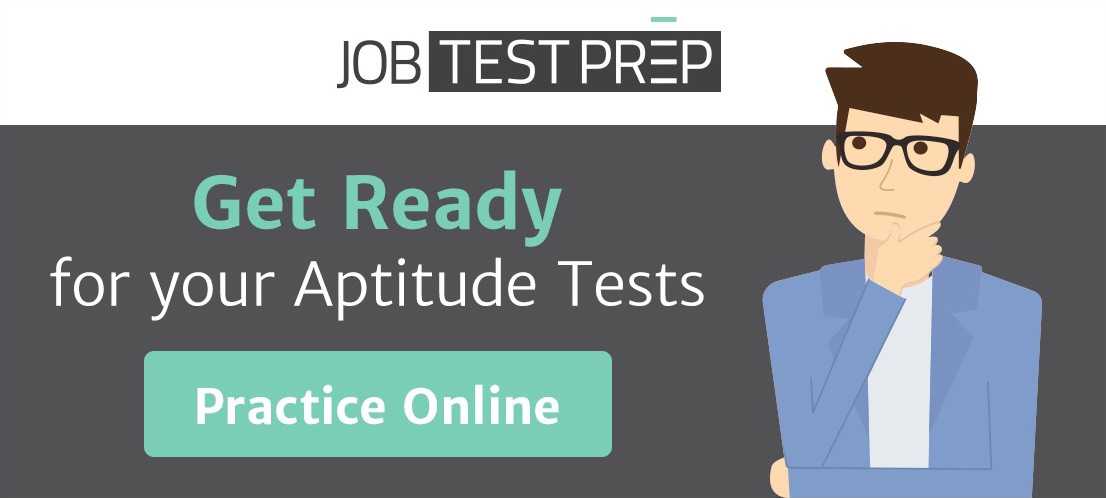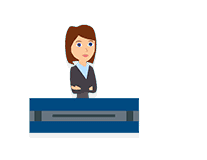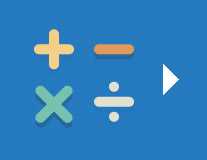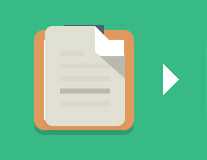i-Ready Diagnostic Test – Prep Guide for 2026
Updated May 30, 2024
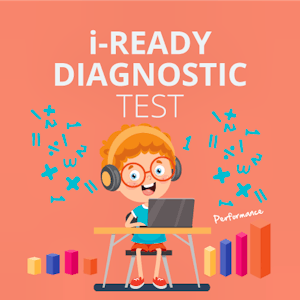
- What Is the i-Ready Diagnostic Test?
- What Is Included in the i-Ready Diagnostic Test?
empty
empty
- i-Ready Sample Test Questions for the i-Ready Diagnostic Test
empty
empty
empty
empty
empty
empty
- i-Ready Test Prep – Top Tips for Kids to Prepare for the i-Ready Diagnostic Test
- Tips for Parents to Help Their Children Prepare
- Frequently Asked Questions
- Final Thoughts

The i-Ready Diagnostic Test is an internet-based adaptive diagnostic test linked to the i-Ready educational learning program.
Students from kindergarten to grade 12 take the test three times each year. The test is divided into two subtests:
- Math
- Reading
i-Ready test results are used to help teaching staff create a personalized learning plan according to a student’s strengths and weaknesses.
What Is the i-Ready Diagnostic Test?
The i-Ready Diagnostic Test is a computer-adaptive, untimed assessment for students between grades K and 12.
Administered by Curriculum Associates, teachers can use it to monitor a student’s ability and progress throughout the school year.
In most cases, the i-Ready Diagnostic Test is administered three times each year. It is split into two subtests: math and reading.
What Is Included in the i-Ready Diagnostic Test?
The i-Ready Diagnostic Test comprises two sections:
i-Ready Diagnostic Test: Math Test
For children in grades K to 1, the test takes approximately 50 minutes to complete.
However, for pupils in grades 2 to 8, the test takes approximately 90 minutes to complete.
The test is made up of between 60 and 90 questions. It is an adaptive test, which means if you answer three questions correctly, the next three questions will be more challenging.
If you answer three questions incorrectly, the following three questions will be more straightforward.
In addition, the test covers the following math and numerical reasoning topics:
- Algebra and Algebraic Thinking – Test-takers must demonstrate basic arithmetic skills to solve equations, number patterns and word problems.
- Numbers and Operations – Test-takers must use basic arithmetic operations (addition, subtraction, multiplication, division) using whole numbers, fractions and decimals.
- Measurement and Data – Test-takers must interpret and analyze data in charts, graphs and tables. For high school grades, this section also covers probability and statistics.
- Geometry – Test-takers must be able to understand and identify two and three-dimensional shapes. Candidates must also demonstrate knowledge of angles and positions.
i-Ready Diagnostic Reading Test
This part of the test covers the following English topics:
- Phonics – These questions relate to the sounds of spoken English. Candidates must be able to match these sounds with individual letters or letter groups to create words and use them in the correct context.
- Phonological Awareness – This section is similar to phonics; however, it relates to the sounds of syllables and letters and how words should be pronounced using phonics skills.
- High-Frequency Words – These are sight words that appear regularly in materials read by students. Candidates must show they can recognize and read these words and use them in the proper context. Examples of high-frequency words include could, and, there, in, was, I and to.
- Vocabulary – Candidates must demonstrate their ability to understand different meanings of words. Students are expected to be familiar with more challenging words as they progress through the grades.
- Comprehension: Literature – This section includes a passage of text. Candidates must read the passage and then answer questions to demonstrate their understanding of what they have read.
- Comprehension: Informational Text – This topic is similar to literature; however, the passage of text is factual and often based on real information.
i-Ready Sample Test Questions for the i-Ready Diagnostic Test
i-Ready Math Test Example Question
How many hearts are in the image?

a) 5
b) 4
c) 2
d) 6
How many hearts would there be if there was one more?
a) 5
b) 4
c) 2
d) 6
Rosa is training for a 115 km cycle race. She goes out on her bike daily and cycles until she feels tired. On the last day of training, Rosa cycled 110 km. On the day of the race, she completes the entire race.
How much further did Rosa cycle between the race and her last day of training?
a) 2 km
b) 3 km
c) 4 km
d) 5 km
Calculate 3/6 as a decimal.
a) 0.25
b) 0.3
c) 0.5
d) 0.75
Study the following sequence of numbers. Which of the numbers is not a prime number?
2, 3, 5, 7, 11, 13, 15, 17, 19, 23
a) 2
b) 5
c) 15
d) 23

If you want 12-month access to all the practice resources for this test, our partner TestPrep-Online.com offers a Family Membership.
Family Membership gives you access to all the TestPrep-Online resources for the next 12 months. You will also get two separate accounts, which can be very helpful if you have two children preparing for their tests.
Bruce and Rachel are making greeting cards. In the last five days, Bruce has made 50 greeting cards, and Rachel has made 110 greeting cards.
What is the difference between Bruce’s and Rachel’s unit rates per day?
a) 4
b) 8
c) 10
d) 12
Jake is one of my most honest friends. Whenever I ask for his opinion on something, he always tells me the truth. He is a very credible friend to have.
What is the meaning of the word 'credible'?
a) Sincere
b) Dependable
c) Sensible
d) Intelligent
Text Passage:
Leah was looking out of her bedroom window. Outside, it was cold, dark and gloomy. She leaned on the windowsill to see outside. It felt freezing cold against her skin. She decided to go and play with her little brother instead. She hadn’t played with him all day, and she thought it might help her to feel better.
What is the mood of this passage of text?
a) Positive
b) Neutral
c) Negative
d) Impossible to say
Text Passage:
Harriet wandered through the bustling market square, taking in the sights, sounds and smells of the stands around her. There were food stands, clothing sellers, vintage crafts and book stalls. After buying a coffee, she was delighted to see her best friend, Rob, walking towards her.
What is the setting of the story?
a) Early morning
b) Food stands
c) The market square
d) Delight
i-Ready Test Prep – Top Tips for Kids to Prepare for the i-Ready Diagnostic Test
There are several ways that students can prepare for the i-Ready Diagnostic Test. These include the following options:
- Practice for the test as much as possible. Taking a series of practice assessments containing similar questions is a great way to help boost your confidence.
- Study little and often. Try to cap study sessions at 30 minutes, then take a break to do something different for a while.
- Read through the test instructions carefully before starting the test. Make sure you read each question in full before answering.
- Points are not deducted if you give an incorrect answer. If you are unsure, it is best to make an educated guess instead of leaving the answer blank.
- If you do need to guess an answer, take time to eliminate answers that are definitely wrong first.
- Be mindful of distractors. These are possible answers that look like they could be right. Make sure you read through the answers carefully before choosing one.
- Stay focused on the test throughout. Don’t allow yourself to be distracted by others.
- Improve your time management. Practicing these skills in the lead-up to the test will help you manage your time effectively, allowing you a better opportunity to achieve a good score.
- Practice breathing exercises. These can be an excellent way to improve feelings of anxiety. If you are feeling anxious or worried about the test, speak to a trusted adult (such as a parent or teacher), as they may be able to help you learn strategies to help.
- Eat a healthy diet and stay hydrated in the days leading up to the test. Enjoy a healthy and nutritious breakfast on the morning of the test so you don’t feel hungry halfway through the exam.
Tips for Parents to Help Their Children Prepare
Parents can play an active role in their child’s i-Ready test prep. Here are some of the ways you can help your child prepare for the i-Ready Diagnostic test:
- Gain a good overall understanding of the test, including its structure, content and purpose.
- Work alongside your child to review the basic principles of the test with your child. This should include working on their foundation skills in both reading and math.
- Encourage your child to practice for the test regularly. This will help them to enhance and hone their knowledge and skills. Try setting up a mock test environment. Knowing what to expect on the day will also help your child to feel more confident on the day of the test.
- Access the i-Ready instructional resources, which have been specially designed to help children prepare for the challenges of the test.
- Help your child to create, maintain and stick to an agreed study schedule.
- Promote healthy habits, such as short study sessions with regular breaks, appropriate working conditions, staying hydrated, healthy eating and plenty of rest.
- Help your child learn how to manage stress and anxiety. Listen to your child if they are experiencing these feelings and work with them to find strategies to help. These might include mindfulness or breathing exercises.
- Create a positive home environment, including a positive mindset about the test.
- Encourage your child to consume a range of reading materials to enhance their ability. Model this behavior at home by reading a range of different materials.
- Use fun methods of learning, such as educational quizzes and games.
- Adapt your child’s learning plan according to their strengths and areas for improvement. If they don’t understand a certain element, they must focus more on this part of the test. Ask your child’s teacher for extra support if required.
- Review your child’s mock test results to establish how they can improve next time.
- Encourage your child to ask questions when they are unsure about something. Show them different ways to find out the answers to their questions.
- Set your child some realistic, achievable goals.
- Offer rewards for success where appropriate.
Frequently Asked Questions
The i-Ready test is a diagnostic assessment for children between kindergarten and 12th grade. It is designed to help educators to support students with a path of personalized learning instruction.
The i-Ready test is adaptive, which means the questions become progressively harder if the student answers questions correctly.
The i-Ready test is designed to challenge students. Each time they answer a set of three questions correctly, they will be presented with three slightly more difficult questions.
Some students will find the i-Ready test hard to pass, although this will depend on their level of ability in math and reading. The default pass score is 67%, although individual schools can offer flexibility on this.
There are between 60 and 90 questions on the i-Ready diagnostic test.
You can find sample questions for the i-Ready test in this article. Other options include the TestPrep-Online website and the i-Ready Central website.
The i-Ready test is not a pass-or-fail test. The purpose of the i-Ready test is to help teaching staff create individual learning plans tailored to the needs of each student. Students sit the test at the beginning, middle and end of each academic year. It is not possible to retake the i-Ready test outside of these times.
The purpose of the i-Ready test is to establish how best to support students with their individual learning journey.
The standard pass score for the i-Ready test is 67%, although schools can adjust this if they want to offer flexibility. To stand the best chance of passing the i-Ready test, students must dedicate sufficient time to practice and preparation before the test.
The i-Ready test is not a pass-or-fail test. Results are used to help teachers create a personalized learning journey to suit the needs of each student. If you do not achieve the minimum standard required by your school, your teacher will support you to make the necessary improvements before the next round of i-Ready testing.
The i-Ready diagnostic test is an important tool for teaching staff, parents and students. i-Ready test results are used to create individual learning plans that best meet the needs of each student. Tests are administered three times per year, allowing parents, teachers, and students to track progress and implement support where required.
Final Thoughts
The i-Ready Diagnostic Test is used by many schools and educational establishments in the United States. Students must sit the test three times yearly - at the beginning, middle and end of the academic year. Results from the test are used to establish a student’s overall performance, areas of strength and required areas for improvement.
Some children find sitting the test stressful, so reminding them that the i-Ready is not a pass-or-fail test is important. Its primary purpose is to track student progress throughout the academic year in order that teachers and parents can work together to support children in their learning journey.
With proper preparation, the i-Ready Diagnostic Test can be an excellent way for children to demonstrate their skills and aptitudes and put them on the path to success in the future.

